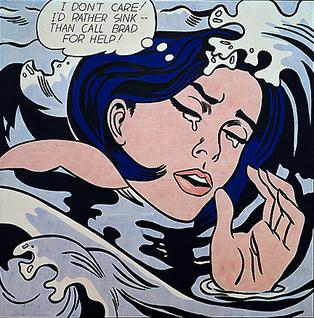The New Haven Register is reporting that a popular high school teacher has resigned his position after complaints stemming from the teacher assigning Daniel Clowes'
Eightball #22 to a 9th grade female student.
Clowes' stories are known -- to those of us in the know on today's comics scene, anyway -- for their offbeat, insightful look at the sides of life that permeate our worlds but that we often fail to consider or brush off because of what they might illuminate about ourselves and our society. His work pays attention to the things we often don't want to admit about our cosy little towns and their inhabitants. A work like
Ghost World or his
Eightball series is a lot like
Spoon River Anthology or
Our Town, only in comics format.
But, as Stephen Cary has pointed out, it's one thin

g to write about nudity, rape, and other "unmentionables" that happen; it's another to see them depicted in a visual form. Americans seem to fear the visual. We want our drawings safe and cartoony. Anything else, we're suspicious of, it seems. Cary refers to this phenomenon as the "naked buns effect."
I have not read the issue that English teacher Nate Fisher asked the female adolescent to read. My general impression of the
Eightball series is that it is probably best for older high school students and does contain Clowes-style quirkiness, meaning it does not shy away from topics of sexuality, perversion, etc. One blog poster on another site said that a respected school library magazine suggested it for 10th grade and higher. I'll have to check my own sources..
This November I will be leading a roundtable discussion at NCTE that will help teachers learn how to navigate their way through the pitfalls and bumpy roads that come with the territory of trying to integrate graphic novels into the classroom. Though I do not want to give too much away here, two bits of advice could help others who might want to use graphic novels in the classroom but are now more afraid to do so:
1. READ it! Don't take a review's word for it or a friend's. Read a graphic novel fully before you bring it into your classroom or assign it or even suggest it to a student. Everyone's community has different standards. Don't get caught without considering those in relation to every panel on every page.
2. Write a rationale for why you want the book in your classroom library, reading list, etc, that explains to administrators, students, and parents why the book is an essential part of your literate environment. Explain the "pedagogical worthiness" of the text in the rationale and be upfront about any issues that might cause some students or parents to blanch. Attach this rationale to the book's cover.
2b.Even better, write the rationale as a contract between student, parent, and teacher such that all parties agree that if the student wants to read the book, all parties are aware of the possible hot spots of the text. Signatures offer a great record, and this means a student who brings the book home to mom or dad is doing so with the explicit and teacher-directed mission of considering the book with his or her parents before the text is read.
Apparently Fisher is a new teacher, and a popular one,which makes it all the more tragic that he's ran into such resistance for what could have been an honest mistake. Since we lose so many new teachers within the first five years anyway, it might have been nice to see the administration at least try to back their new hire. An administration with spine.... Ah, to dream. Surely there are some out there....
I was also disappointed that someone found issue with Fisher asking the student "how did the book make you feel?" I twinged when I considered the possible ramifications: will the school over-react and restrict the use of all text-to-self connection questions?
And let's not get too out of sorts because the book in question is a graphic novel. Plenty of traditional print-based novels have caused folks to react or over-react as well.
I'm not sure if more info will come to light about this teacher or about this story in general. I feel for all involved and hope that there's no reason for me not to hope that Mr. Fisher can and will find employment as a teacher elsewhere.
At the very least, hopefully the two bits of advice above will help others from finding themselves behind the eightball when it comes to using graphic novels in their classrooms.



